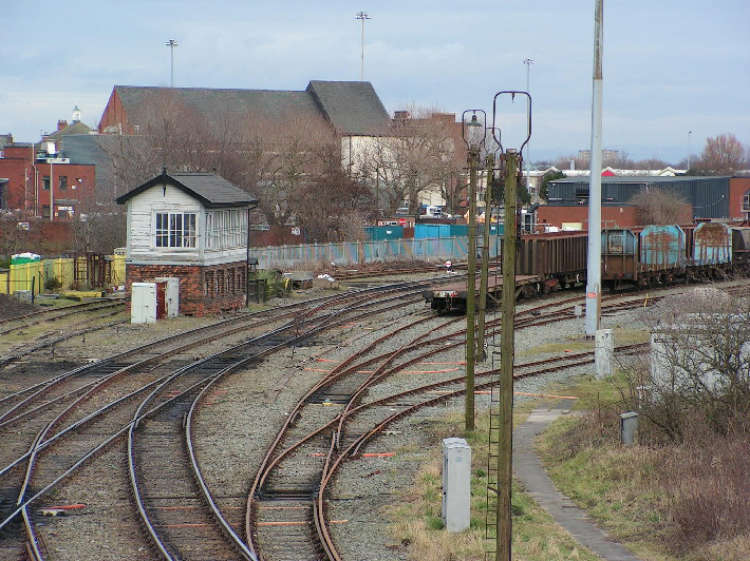
8D ASSOCIATION
The 8D Association is dedicated to promoting the history of the railways of South Lancashire, Merseyside and North Cheshire.
A study of the signal boxes from Speke Junction to Arpley.
A look at the many signal boxes along the route from Speke Junction to Warrington Arpley. As you may know the original SH & RGR line ran through Widnes at the Watreloo Road crossing, the LNWR constructed the Deviation to allow this route to be closed. The boxes along both sections are described here.
Speke Junction.
There have been 5 boxes at Speke Junction over the years with the rapid expansion of the railway in the area larger boxes were built by the railway companies. The first was built in 1868 and abolished in 1872 being replaced by a larger box until this too was abolished in October 1884. The next box built by the LNWR contained a 22 lever frame but with the increase in traffic had to be replaced by another in September 1893. This box was an LNWR Type 4 Box with a 72 lever frame. With improvements in the area it was decided to replace this box with an LNWR Type 5 Box in 1907. It has a wooden top with a 3 storey high brick base. It was originally fitted with a 100 lever frame which was later reduced to 86. On Monday 10th April 2006 a new IFS mini panel was added to the box to cover the Garston Junction area.
The railway was to burrow under the exiting Grand Junction line at Warrington Bank Quay which had opened on 25th July 1831. After passing under the station at Warrington the railway was to eventually meet end on with the Warrington and Stockport Junction Railway at Arpley.
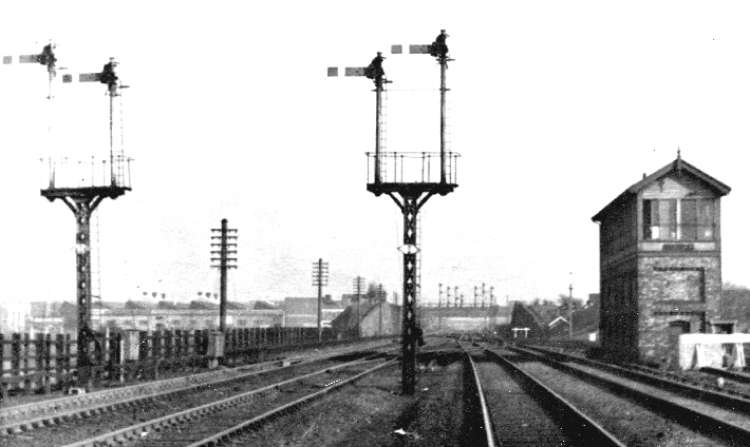
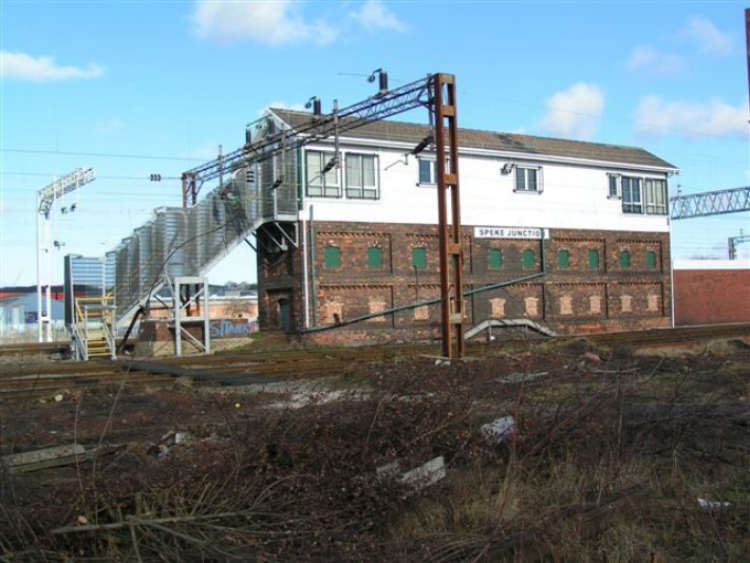

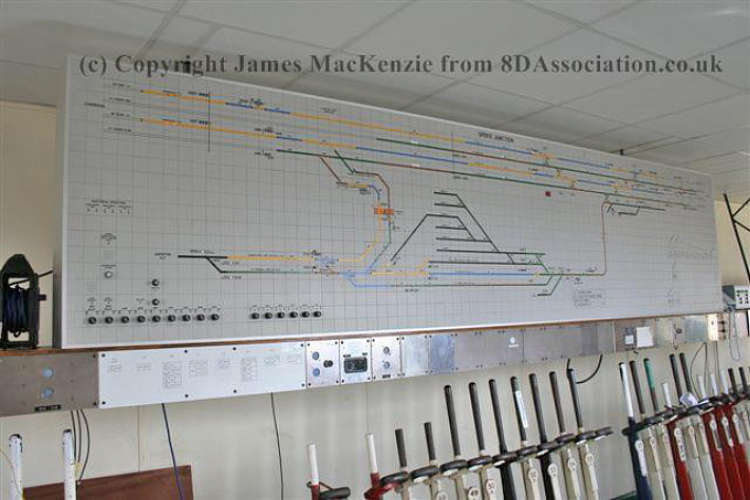
Speke Station.
Woodside Siding.
Two boxes have been sited here the first being from 1879 to July 1884 when a replacement LNWR Type 4 box was built with a 24 lever frame. This box lasted until it was abolished on 11th December 1960.
We do not have a picture of the box at Woodside Siding. If you do and would like to share it please send it to 8d.association at gmail.com. It will be shown here and fully credited.
Ditton Junction No2.
A box was first sited here in November 1884, an LNWR type 4 with an 80 lever frame it was replaced by British Railways on 7th November 1960. The new box which opened on the same day was a BR LM 15 wooden top with a flat roof on a brick base type. It had a 55 lever frame and a panel for controlling the Ford sidings at Halewood. This box was abolished on 10th December 2000 with the opening of the Ditton Power Box on the site of the former station goods yard.
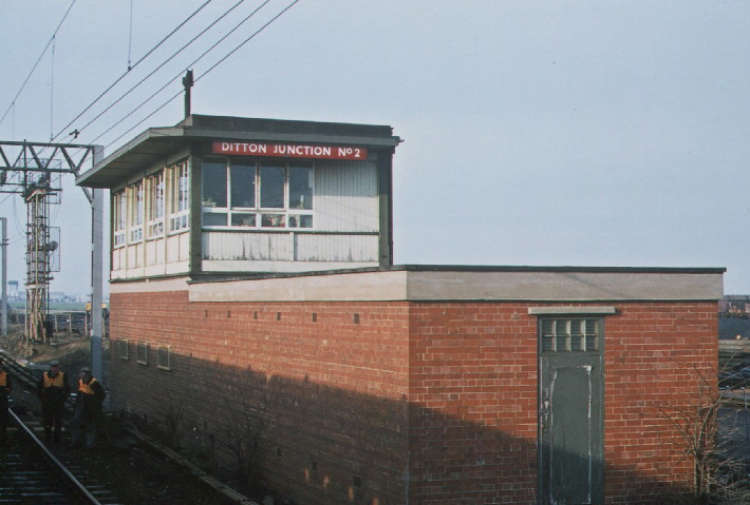

Photo by David Ingham. To view more of David’s excellent pictures on his extensive Flickr photostream click here

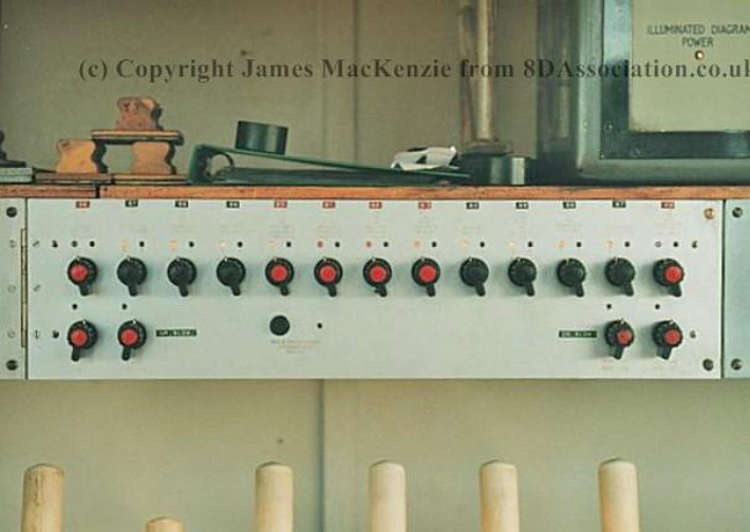
Ditton Power Box.
The new Power Box at Ditton replaced No1 and No2 boxes and was opened on 10th December 2000. The box was built on the former stations goods yard. It was constructed by the now defunct Railtrack and is brick built with a bank of double glazed windows and a hip roof. It is fitted with a Henry Williams domino NX panel.
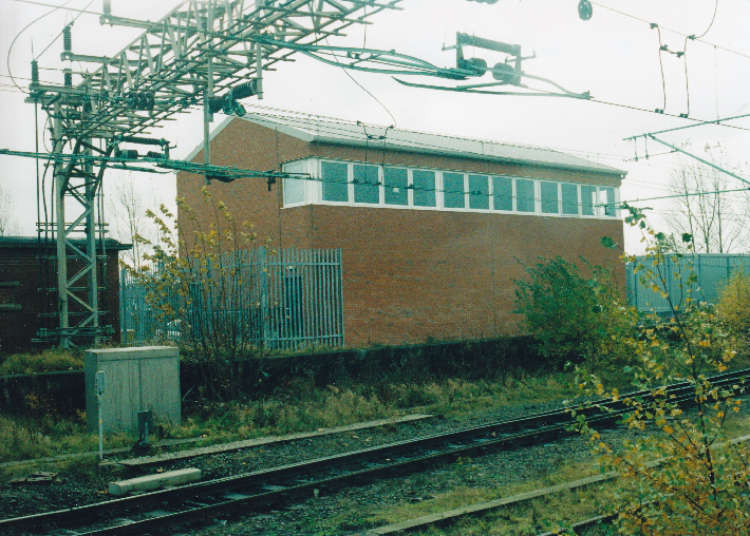
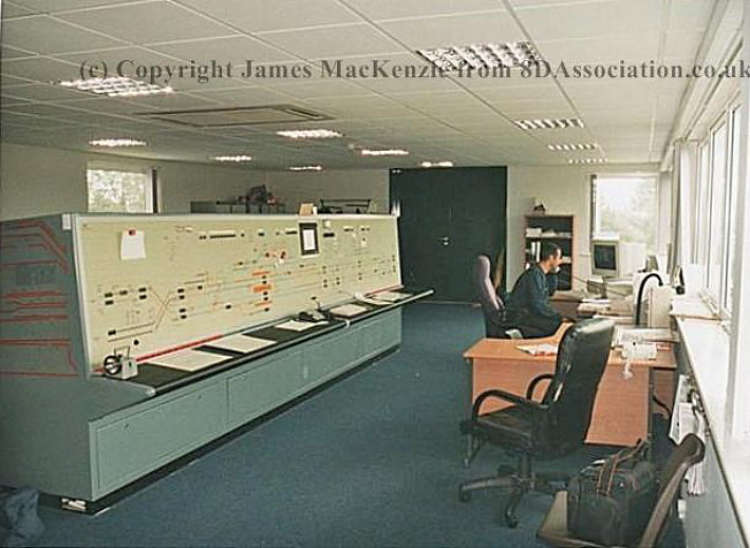
Ditton Junction No1.
There have been 2 Ditton Junction No1 boxes the first was opened in October 1884 and was an LNWR Type 4 wooden topped box on a tall thin two storey brick base. The working room was partly on steel stanchions over the track and was equipped with a 75 lever frame. This box was abolished on 22nd July 1956 and replaced by a BR LMR Type 15 box. This had a wooden top with a flat roof on a brick base and had a 100 lever frame. The second box was abolished on 10th December 2000 with the opening of the new Ditton Power Box.

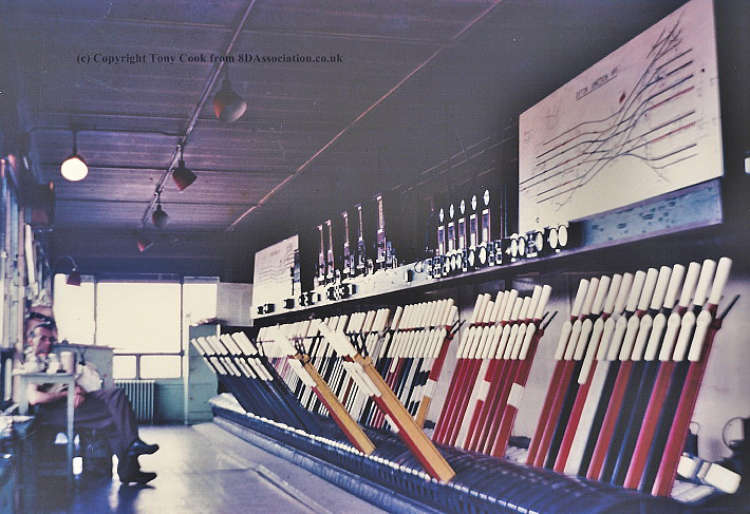

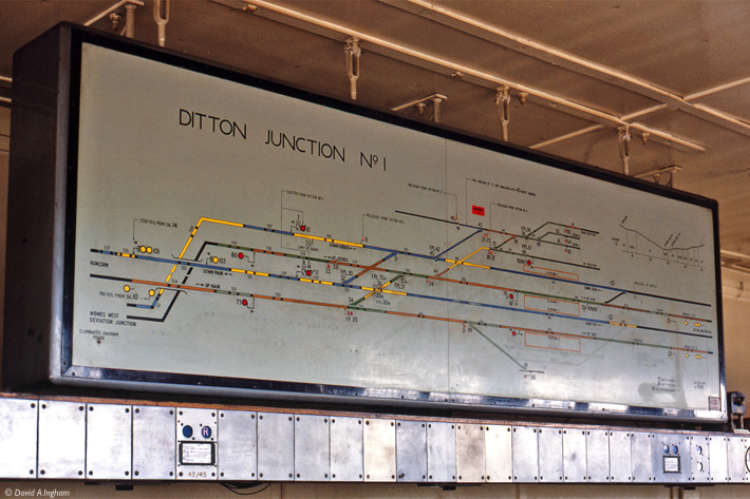
Ditton Junction Crossing box.
A box was provided here to control the level crossing between 1868 and 1884. Presumably the new Ditton Junction No1 taking over its duties.
Ditton No1 East.
Opened in 1868 this box was a Saxby and Farmer Type 6 brick built box. The box was abolished in October 1884. Presumably the new Ditton Junction No1 took over its duties.
Widnes West Bank.
Widnes West Deviation.
There have been 4 boxes controlling the junction between the original line and the deviation and the entrance to Hutchison Street Goods Yard. The first was constructed and opened in conjunction with the opening of the deviation line by the LNWR in 1869. It had a short working life and was abolished in 1874 when the second box was to open. This box also had a short working life and after only 10 years it too was abolished. The replacement box had a slightly different name being called West Deviation Junction. This box was an LNWR Type 4 wooden top with a brick base box it had a 50 lever frame. This box was also abolished on 12th February 1967 and replaced by an LMR type 15 box of a wooden construction with a flat roof. The name reverted to Widnes West Deviation when the new box opened. With the closure of the Hutchison Street Yard it was decided to close the box and it was abolished on 19th December 1988.
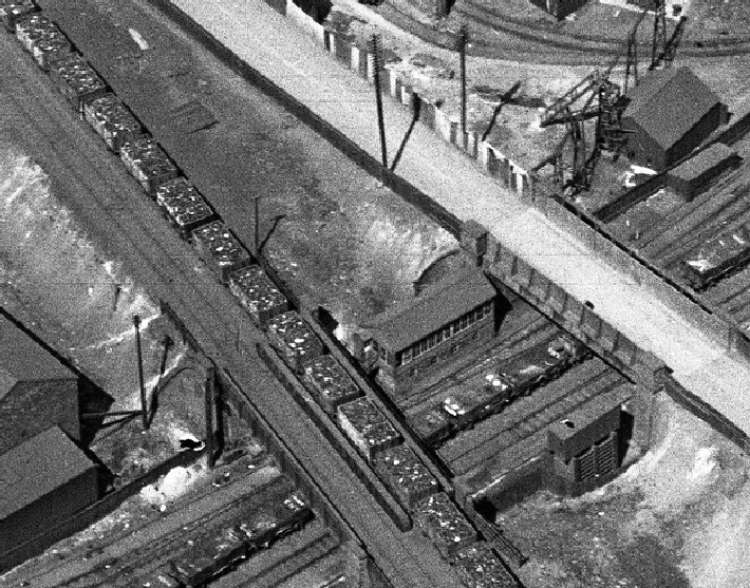
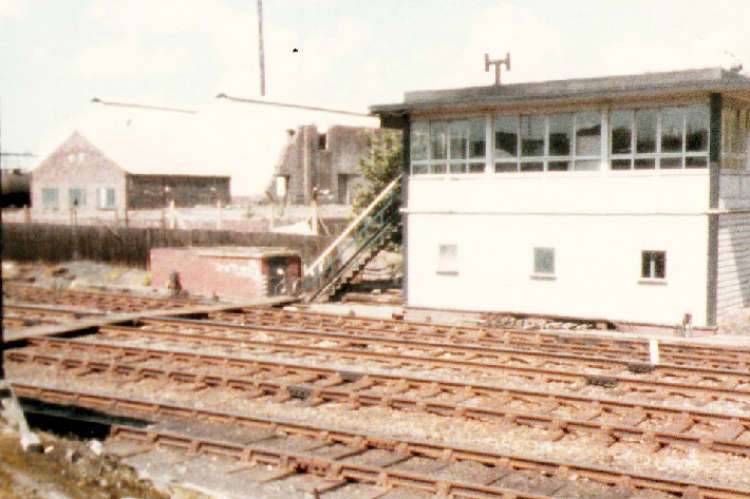

(To view more of David’s excellent pictures on his extensive Flickr photostream click here )
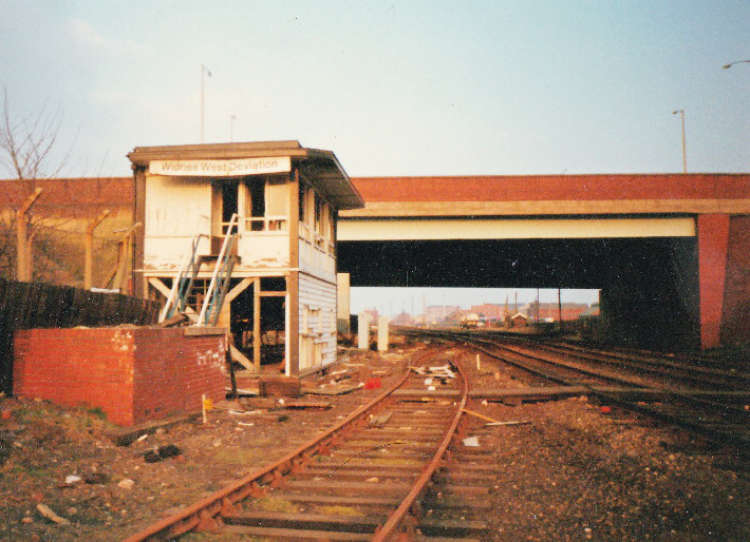
(To view more of Harry’s interesting pictures throughout the North West click here )
Waterloo Road Crossing.
The box at Waterloo Road and associated level crossing caused a lot of congestion locally but with the opening of the deviation in 1869 movements across the crossing diminished. The crossing would still be open for a further 99 years though, only closing in 1968.
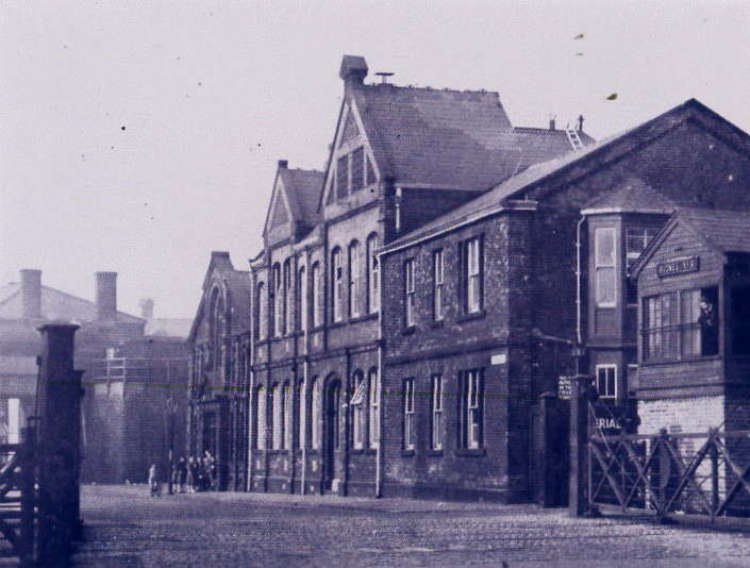
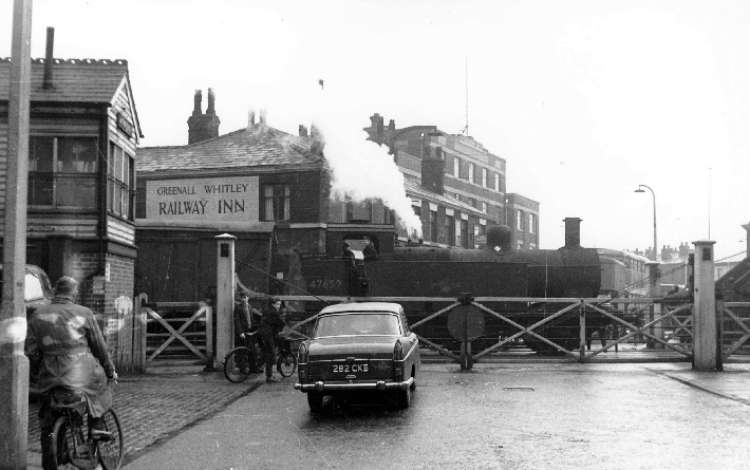
Widnes No7.
There have been 2 boxes called Widnes No7 the first opened in conjunction with the opening of the deviation line by the LNWR in 1869. The box was to control the junction with the new link to the old SH & RGR line. This box was to be abolished in 1893 with the building of the LNWR type 4 all wooden construction box. The box was all wood due to the box being located on a high embankment. The box was equipped with a 20 lever frame but only 13 of them were working the others being spare. The box cost £265 to build and equip with the frame. The box was closed on 18th April 1982 when the connection from the deviation to Tanhouse Yard was brought into use allowing the southern end of the old SH & RGR to be closed.
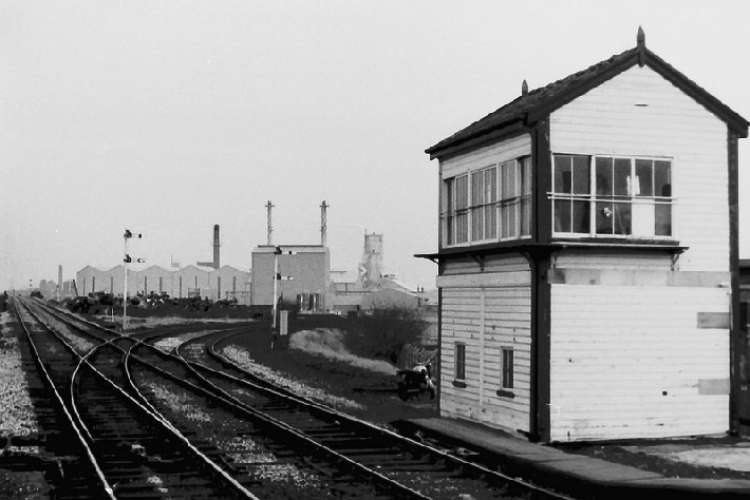
(To view more of David’s interesting Flickr photstream click here )

Widnes Dock Junction.
Widnes Dock Junction box controlled movements from the ex SH & RGR Widnes St Helens to Widnes line and the Warrington to Garston line. It was situated directly in front of the flat crossing of the two lines. The decline in freight traffic in the late 1960’s saw the deviation handle all through traffic and the box was closed.
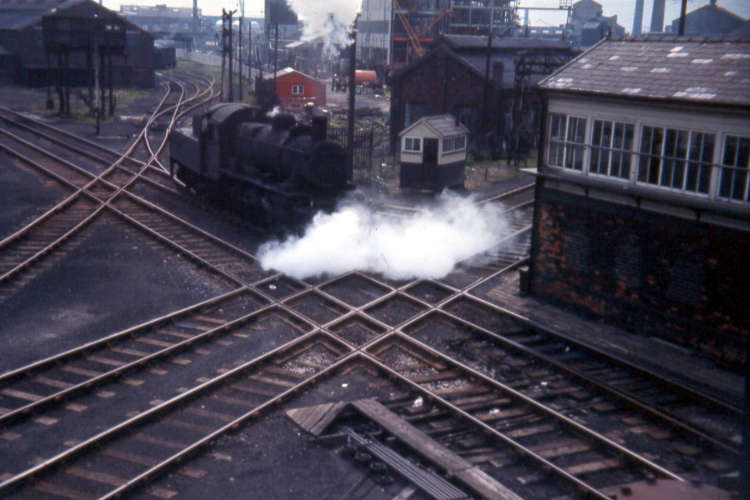
Carterhouse Junction.
The original box at Carterhouse junction was opened with the LNWR deviation line in 1869 and was abolished in 1896. The 1896 replacement was an LNWR type 4 box with a wooden top and a brick base it was equipped with a 30 lever frame. The box was abolished on 3rd December 2006 and was left switched out until it was demolished on 14th April 2007.
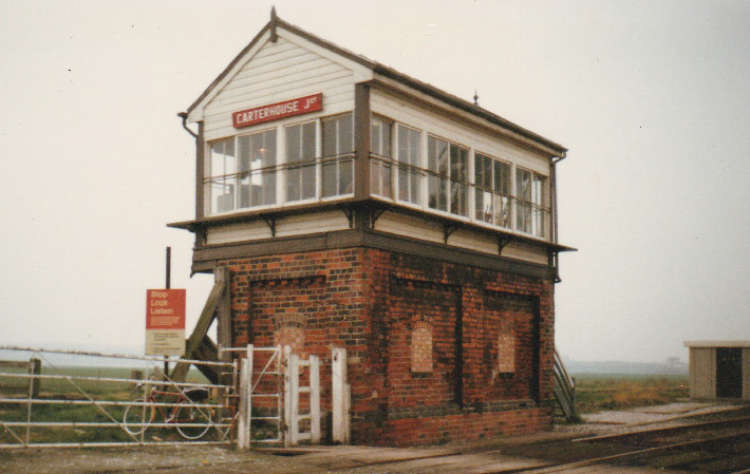
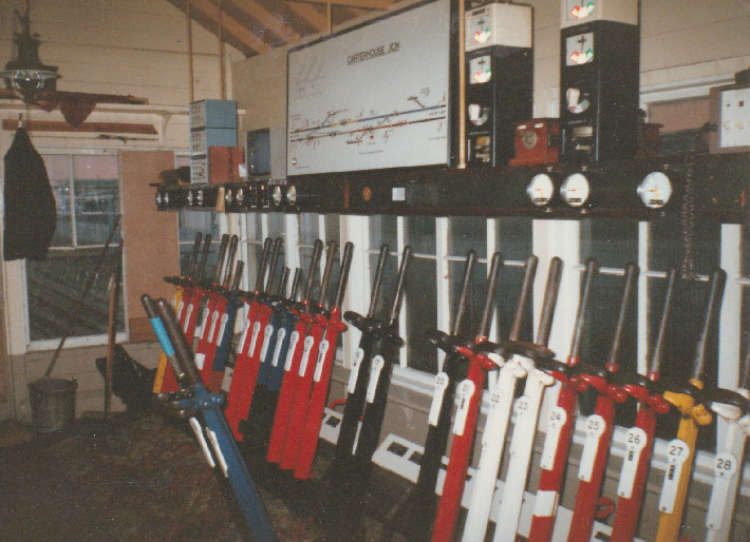
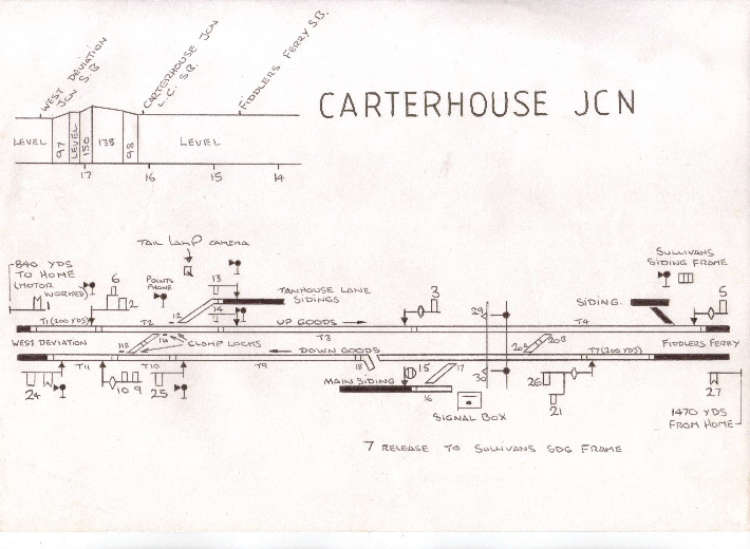
(To view more of Harry’s interesting pictures of operations in the North West click here )
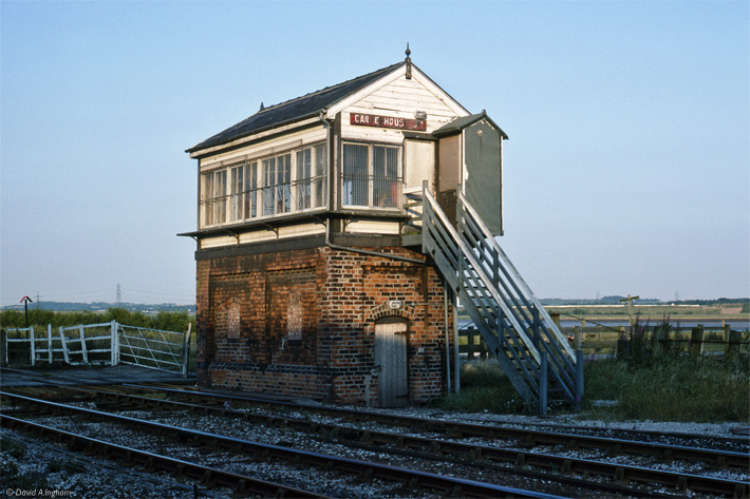

(To view more of David’s excellent and extensive Flickr photostream click here )
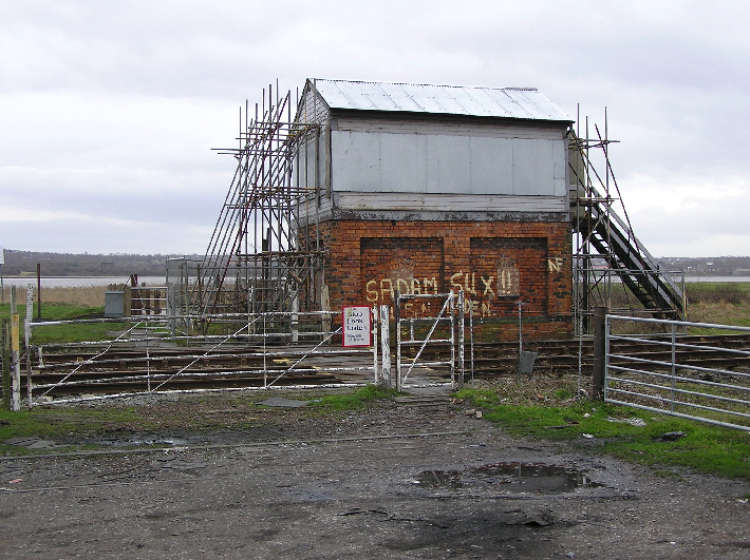
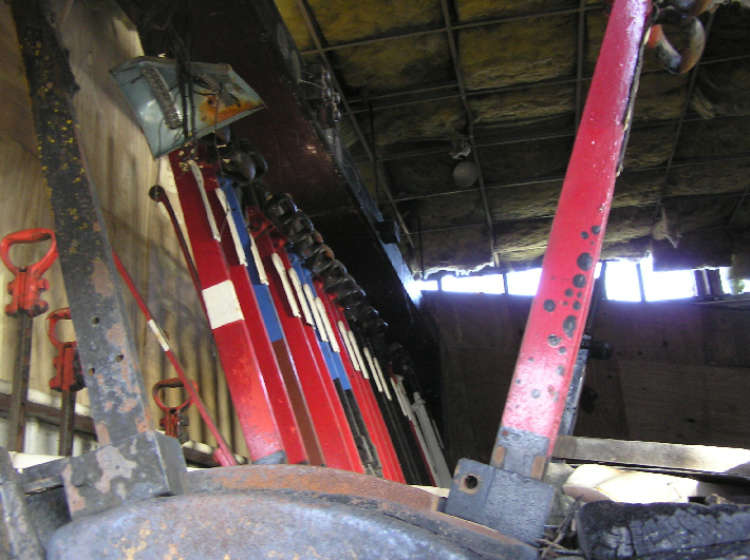
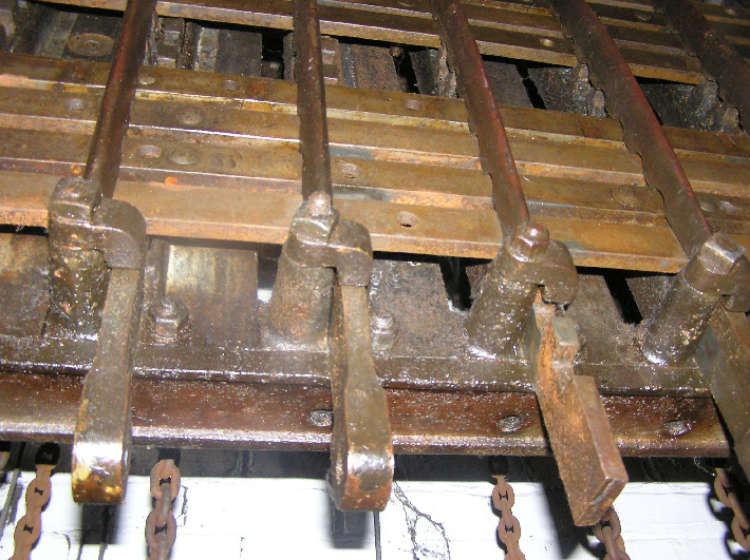
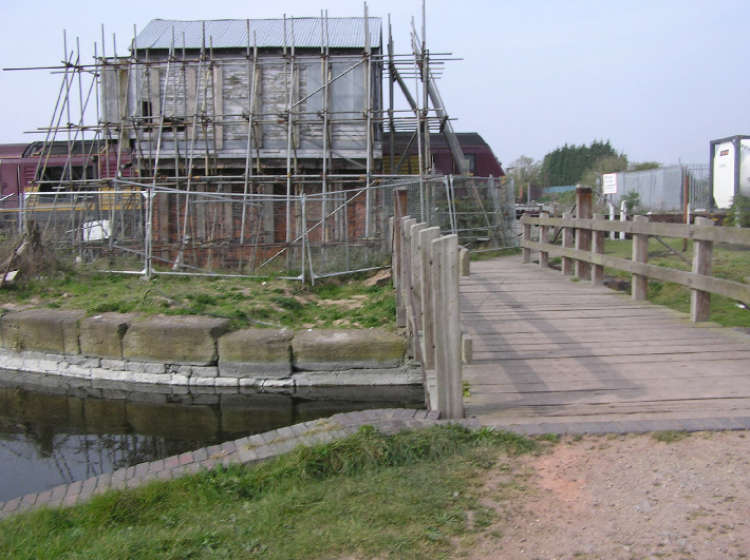
British Alkali.
Two boxes have stood on the site for controlling the movements to and from the sidings at British Alkali the first was in use between 1879 and 1896. This box was abolished and replaced with an LNWR type 4 box with a small 11 lever frame it cost £ 206 to build and equip. The box was abolished on 12th June 1955.
Fidlers Ferry Power Station.
When the railway came and opened a station at Fidlers Ferry they used the correct spelling with only a single d. The CEGB decided to build a new coal fired power station and called it Fiddlers Ferry adding a ‘d’. The new power station was to be rail connected for its coal deliveries by the new Merry Go Round system and the new signal box controlling movements from the main line was called Fidlers Ferry Power Station. The railway using the original spelling. The box which opened on 30th July 1967 is a BR LM 15 type all wooden construction with a flat roof it is equipped with a 45 lever frame.

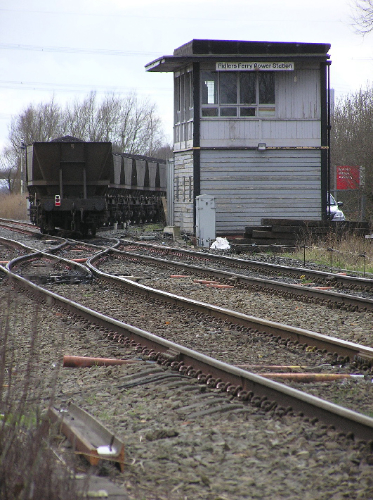
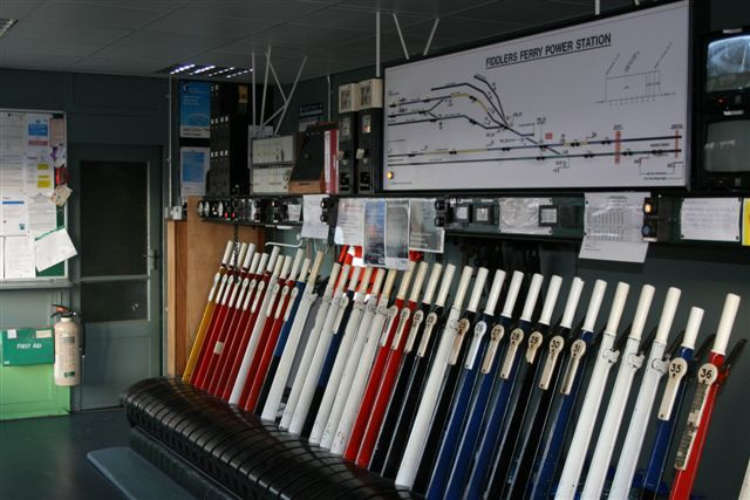
To view more of the James Mackenzie collection click here
Fidlers Ferry.
Two boxes have been at the site of Fidlers Ferry station. The first opened in 1880 and was a Saxby and Farmer type 6 box built of brick. This box was abolished in 1904 when the new LNWR type 4 wooden top box on a brick base was opened. Initially the box was equipped with 15 levers until 1918 when it was re-equipped with a 25 lever frame. With the closure of the stations goods yard on 24th January 1960 the box was reduced to a crossing control frame. The box was abolished on 1st May 1965.
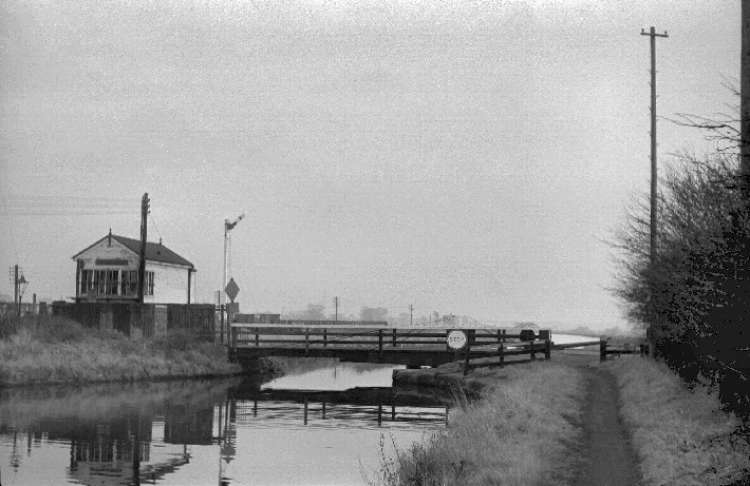

(View more of Harry’s Waterway Images here )
Penketh Hall Crossing Keepers Cottage.
Only recently supplied to the Association is this set of pictures showing the crossing keepers cottage which existed at Penketh Hall Crossing.The crossing keepers cottage was located between the railway and the canal. A pair of indicators can be seen on the wall of the cottage to the left of the left hand window one showing the up line and one the down. The crossing controlled access from Penketh Hall, inhabited by the Penketh family until 1624, across the double track railway and onto a swing bridge crossing the canal.
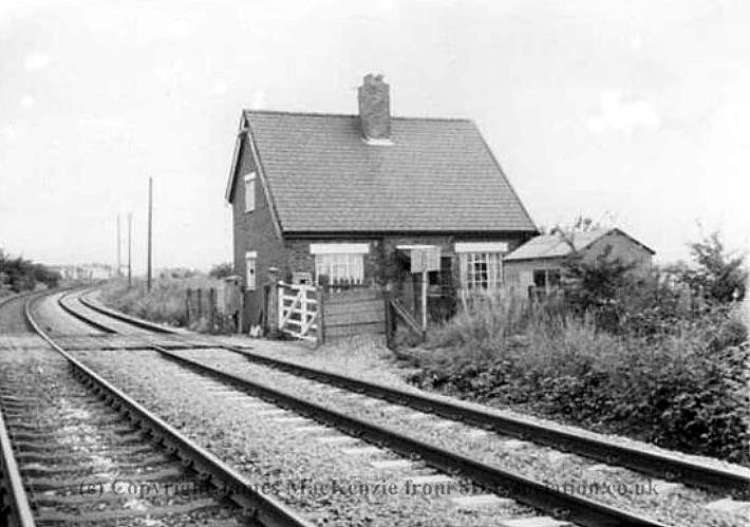

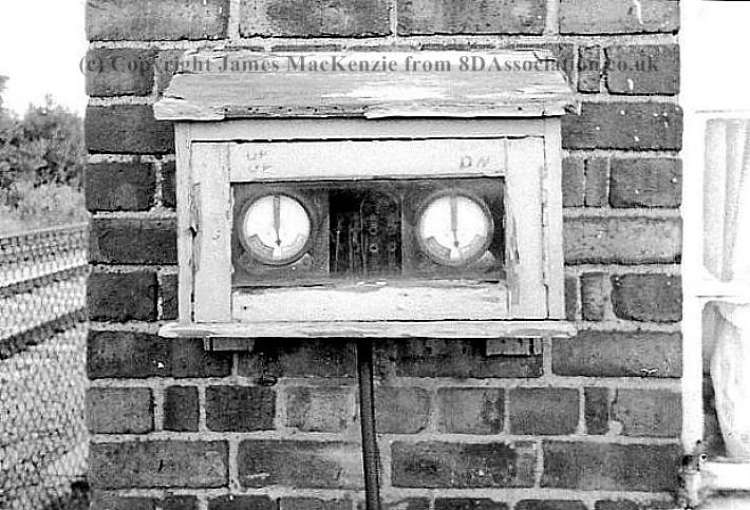
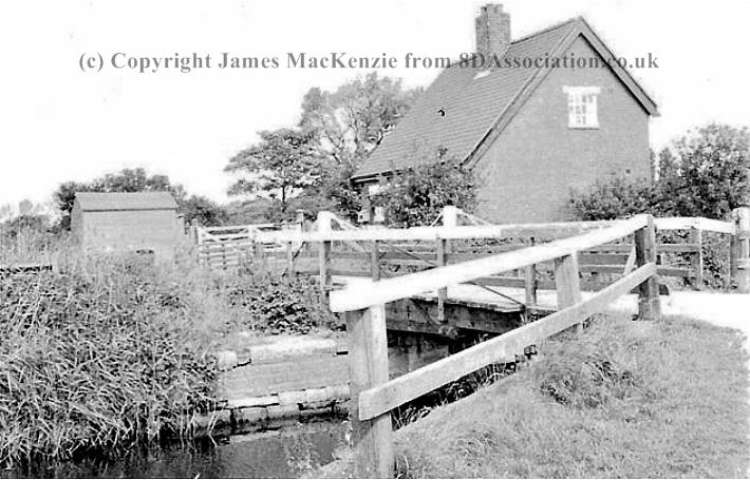
To view more of the James Mackenzie collection click here
Sankey Bridges No1.
There have been two boxes by the former station at Sankey Bridges the first opening in 1872. This box was abolished in September 1893 when the new LNWR type 4 wooden top box on a brick base was built it was equipped with a 20 lever frame. The boxes at Sankey Bridges were located at the east end of the down platform and controlled the swing bridge over the Sankey Canal.

(View more of Harry’s Waterway Images here )
Sankey Bridges No2.
Monks Siding.
The box here was opened in 1875 and is a LNWR type 3 wooden top box on a brick base it was equipped with a 20 lever frame. The box has been altered slightly throughout the years with the steps being moved from the Warrington side to the Sankey side. The sidings into the wire works which it once controlled are all now gone but the box is still performing the functions it was built for over 130 years ago. It is worthy of note that between Monks Siding and Arpley Junction the distances between the boxes was very short and all the distant semaphore signals were fixed at caution.
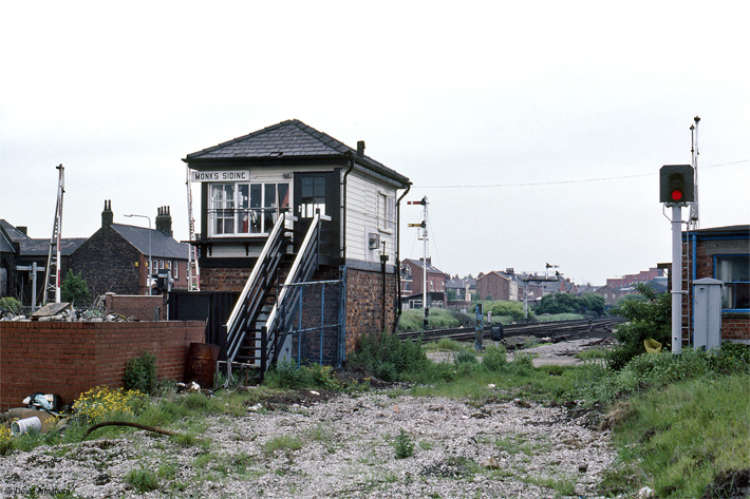

(To view more of David’s excellent and extensive Flickr photostream click here )
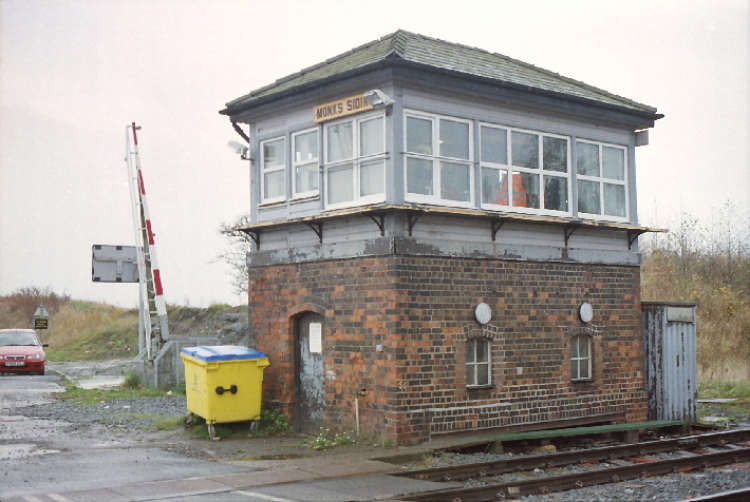
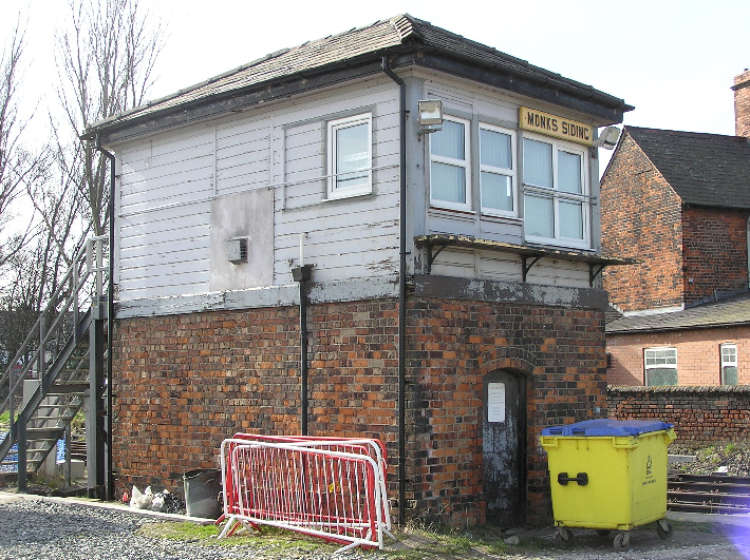
Littons Mill Crossing.
Named after the flour mill adjacent to the line two boxes have been on the site. The first was opened in 1875 and was abolished in 1890. The 1890 replacement is a LNWR type 4 wooden top box on a brick base. It was initially equipped with 16 levers until 1922 and was then re-equipped with an 18 lever frame. The recent re-signalling in the area and the abolition of the semaphore signals has seen Littons Mill Crossing reduced to a crossing keepers shelter.
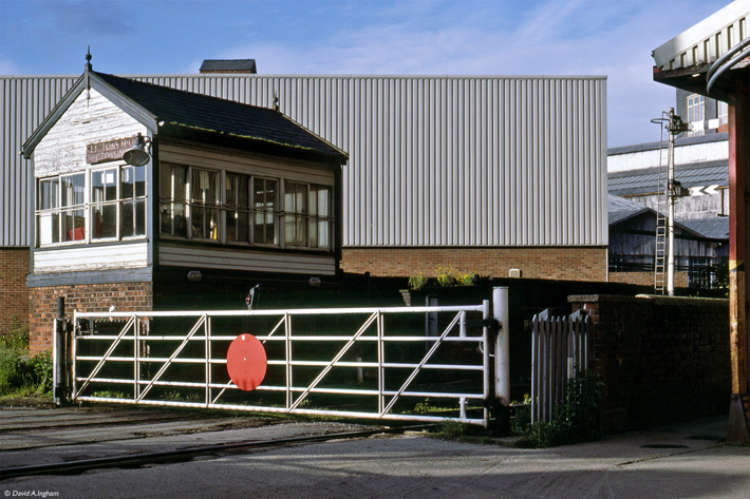
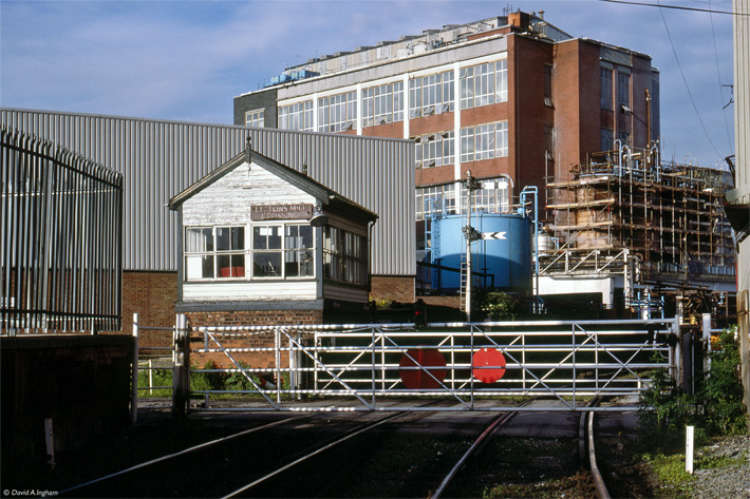
(To view more of David’s excellent and extensive Flickr photostream click here )
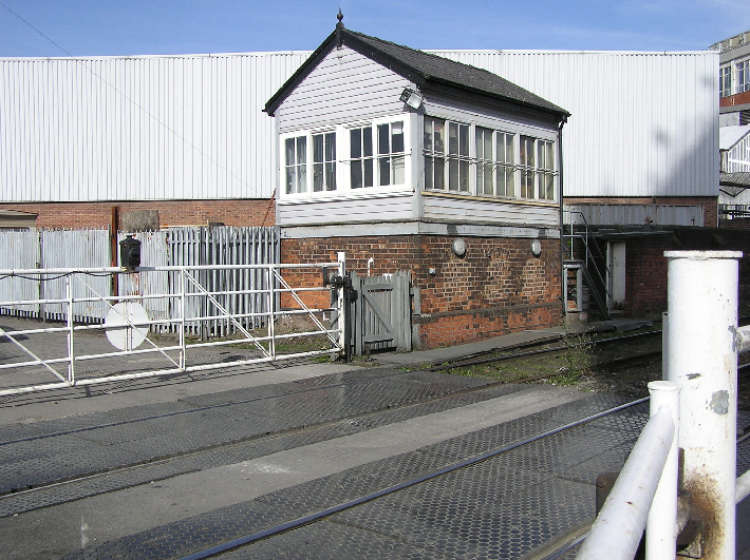

Crossfields Crossing.
There have been two boxes at Crossfields located within the Lever Brothers works. The first was opened in 1872 and was replaced in 1907. The replacement box is an LNWR type 4 wooden top box with a brick base. It was equipped with an 18 lever frame but in its latter years of use only 4 were in use. The box was extensively refurbished in August 2007 and was abolished as a signal box under the recent re signalling scheme. The box was abolished on 16th July 2012, the structure is still in use as a relay room.
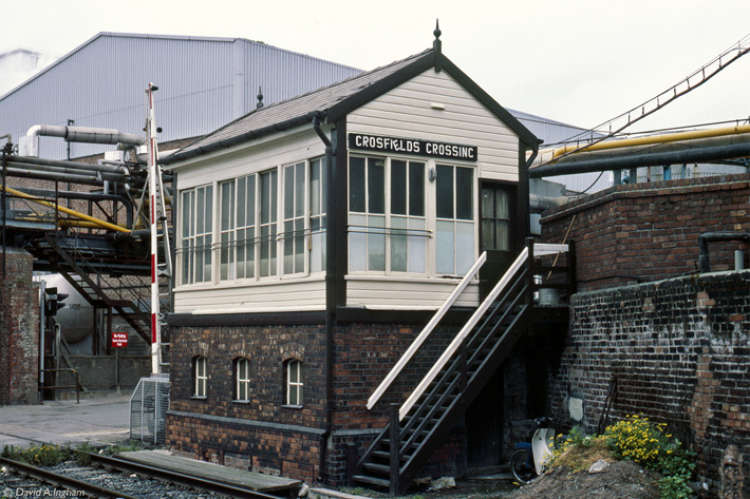
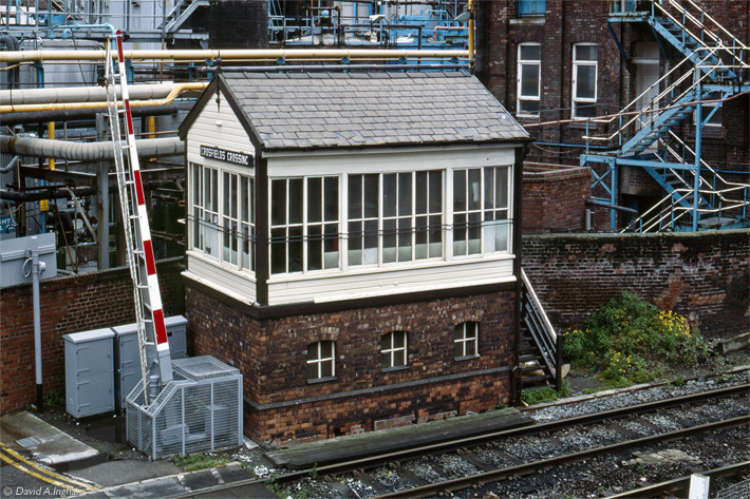
(To view more of David’s excellent and extensive Flickr photostream click here )
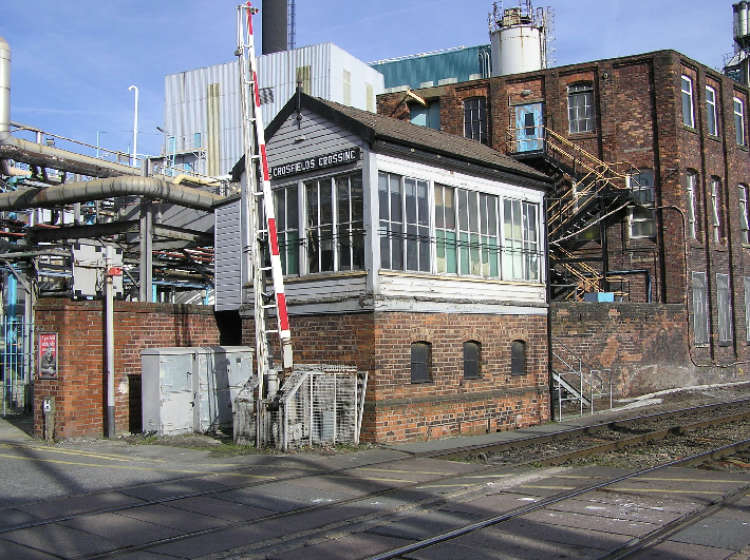
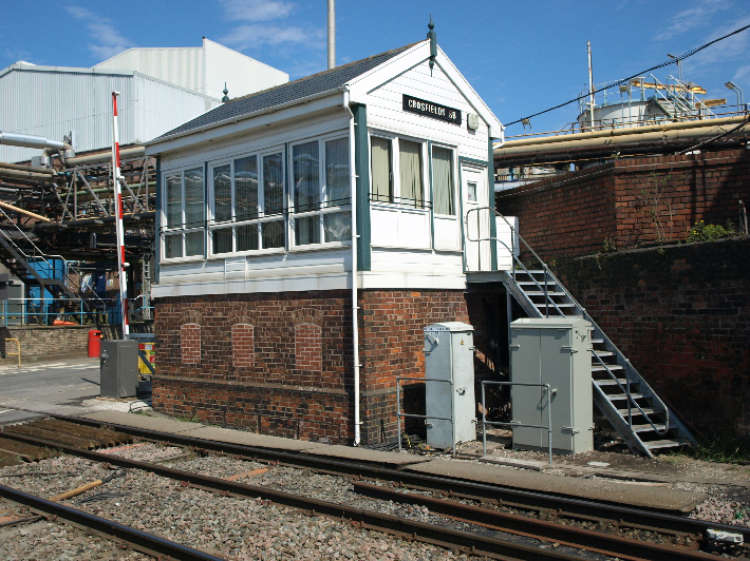
Slutchers Lane.
The original box at Slutchers Lane was also a crossing box for the level crossing that existed at the time. The box was relocated when the road over bridge was constructed and to enable the ‘bobby’ to have a better view along the line. The second box was located at the east end of the westbound platform of Warrington Bank Quay Low Level station. It was an LNWR built box similar to many of the others along the line. The box was abolished in the 1960’s and has been demolished.
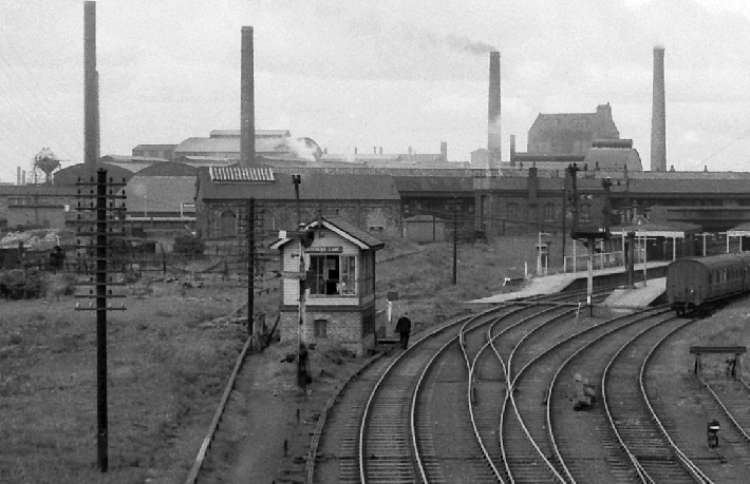
(View more of Harry’s Waterway Images here )
Arpley Junction.
Another of the traditional LNWR boxes it is located to the west of the old Arpley station, which has since been demolished. The box is still in use and controls movements over the junction with Arpley Yard and the Low Level line it also controls shunting movements in and out of Latchford sidings, primarily used by coal trains for Fiddlers Ferry.

(To view more of David’s excellent and extensive Flickr photostream click here )
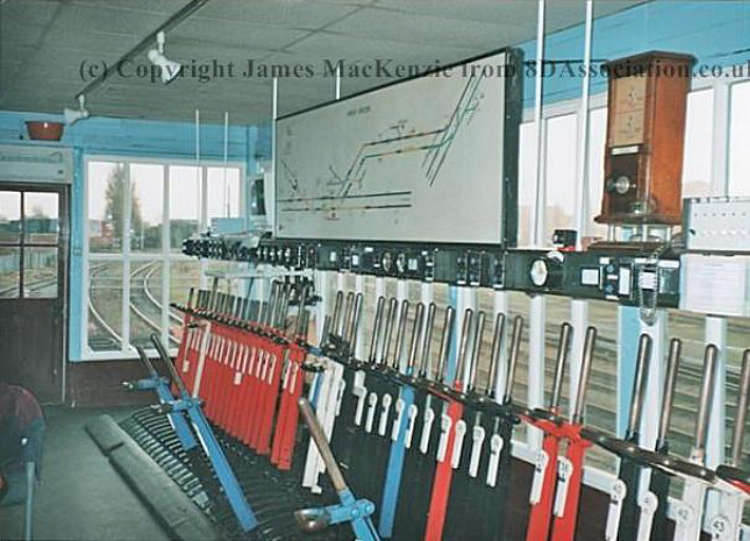
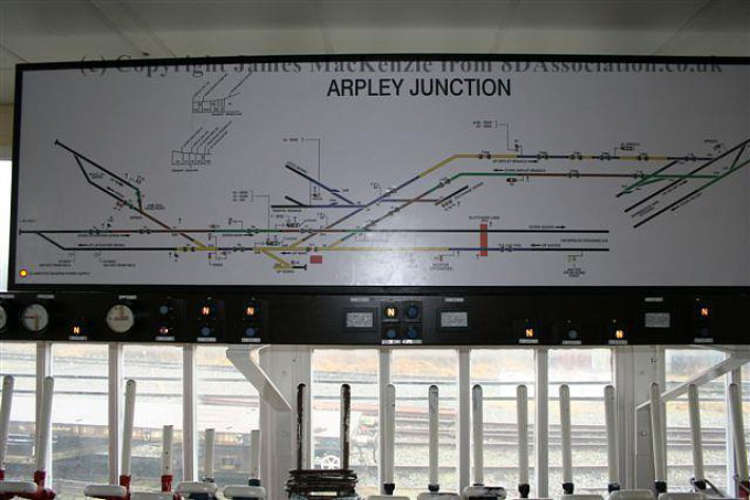
To view more of the James Mackenzie collection click here
